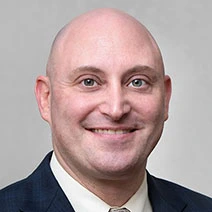Study – Texting increases risk of crashes
The first study of drivers texting inside their vehicles shows that the risk sharply exceeds previous estimates based on laboratory research and far surpasses the dangers of other driving distractions.
The new study, which entailed outfitting the cabs of long-haul trucks with video cameras over 18 months, found that when the drivers texted, their collision risk was 23 times greater than when not texting.
The Virginia Tech Transportation Institute, which compiled the research and plans to release its findings today, also measured the time that drivers take their eyes from the road to send or receive texts.
In the moments before a crash or near-crash, drivers typically spent nearly five seconds looking at their devices enough time at typical highway speeds to cover more than the length of a football field.
Even though trucks take longer to stop and are less maneuverable than cars, the findings generally applied to all drivers, who tend to exhibit the same behaviors as the more than 100 truckers studied, researchers said.
Compared with other sources of driver distraction, “texting is in its own universe of risk,” said Rich Hanowski, who oversaw the study at the institute.
Hanowski said the texting analysis was financed by $300,000 from the Federal Motor Carrier Safety Administration, which has the mission of improving safety in trucks and buses. The final analysis of the data is undergoing peer review before formal publication.
Tom Dingus, director of the Virginia Tech institute, one of the world’s largest vehicle safety research organizations, said the study’s message was clear.
“You should never do this,” he said of texting while driving. “It should be illegal.” Thirty-six states do not ban texting while driving; 14 do, including Alaska, California, Louisiana and New Jersey. In Austin, City Council Member Mike Martinez is pushing to ban texting while driving and require the use of hands-free devices for those who talk on the phone while they drive.
One difficulty in measuring crashes caused by texting drivers — and by drivers talking on phones — is that many police agencies do not collect this data or have not compiled long-term studies. Texting also is a relatively new phenomenon.
Overall, texting has soared. In December, phone users in the United States sent 110 billion messages, a tenfold increase in just three years, according to the cellular phone industry’s trade group, CTIA.
By comparison, several field and laboratory studies show that drivers talking on cell phones are four times more likely to cause a crash than other drivers. A previous Virginia institute study videotaping car drivers found that they were three times more likely to crash or come close to a crash when dialing a phone and 1.3 times more likely when talking on it.
Bottom line – don’t text and drive.


